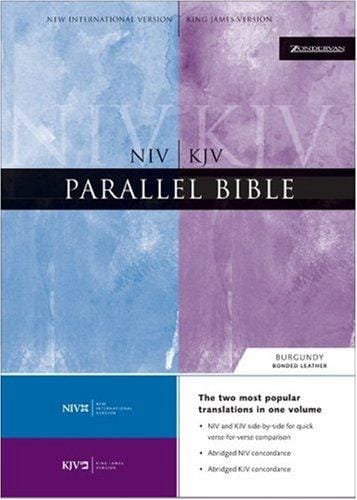Parable of the Sower: Meaning, Themes & Modern Application
Explore the Parable of the Sower—its context, meanings, and lessons for personal growth. Learn how to cultivate good soil and bear lasting spiritual fruit.

Introduction
The Parable of the Sower is one of the most well-known teachings of Jesus, recorded in the Synoptic Gospels—Matthew 13:1-23, Mark 4:1-20, and Luke 8:4-15. With just a few vivid images, the story describes four different kinds of soil and the diverse results that follow when a farmer scatters seed. Yet beneath its agrarian surface lies a deep spiritual message about how people receive and respond to God’s word. This article explores the historical context, key themes, and enduring relevance of the Parable of the Sower, offering practical insights for anyone seeking genuine spiritual growth today.
Historical Context and Setting
First-century Palestine was an agricultural society, so Jesus frequently used farming imagery to connect with listeners. Sowing by hand preceded the plowing of fields; farmers scattered seed broadly, then tilled the soil so seeds could take root. Jesus delivered this parable while sitting in a boat on the Sea of Galilee, addressing crowds gathered on the shore. The acoustics of the water amplified His voice, allowing a large audience to hear. The scene underscores the story’s central motif: many people hear the same message, yet their responses differ dramatically based on the “soil” of their hearts.
The Four Soils Explained
The Path
Seed that falls on the beaten path never penetrates the ground. Hard-packed earth represents hardened hearts, resistant to divine truth. Birds quickly snatch the seed away, symbolizing the devil removing God’s word before it has a chance to germinate. This soil highlights the danger of cynicism, distraction, or intellectual pride that shuts out spiritual insight.
Rocky Ground
Rocky soil contains a thin layer of dirt over limestone. Seeds sprout quickly, but shallow roots cannot access moisture; the sun scorches the seedlings, and they wither. Jesus equates this to people who initially receive the word with joy, yet fall away when facing trials or persecution. Enthusiasm without depth produces temporary, fragile faith.
Thorny Ground
In the third scenario, seeds take root among thorns. Although plants grow, weeds choke them, preventing maturity and fruitfulness. Jesus explains that worldly worries, the deceitfulness of riches, and the desires for other things suffocate spiritual life. The result is stagnation—growth without fruit.
Good Soil
The final soil is well-tilled, deep, and free of weeds. Seeds here produce abundant harvests—thirty, sixty, or a hundredfold. This fertile ground represents people who hear the word, understand it, and persevere. They embody transformed lives and multiply the blessing to others.
Key Themes and Symbols
Seed as the Word of God: Across the Gospels, the seed invariably stands for divine revelation—whether scripture, prophetic teaching, or the preached gospel. The seed is potent and life-giving; its ultimate impact depends on the environment it encounters.
Soil as the Heart: Jesus shifts responsibility from the sower to the listener. Spiritual fruitfulness is less about how persuasively the message is delivered and more about the listener’s openness, perseverance, and priorities.
Fruitfulness as Evidence: In an agrarian economy, harvest equals survival. Spiritually, visible fruit—love, justice, generosity, and disciple-making—verifies authentic faith. The parable challenges us to evaluate whether our lives display measurable kingdom impact.
Modern Relevance
Although spoken two millennia ago, the Parable of the Sower feels strikingly contemporary. Information bombards modern society; podcasts, social media, and news feeds all vie for attention. Like the first soil, people today can become hardened by cynicism or inundated by competing worldviews. Shallow engagement mirrors rocky ground—initial excitement after a conference, retreat, or viral sermon often dissipates under the heat of real-world pressures. Consumer culture and the relentless pursuit of achievement resemble thorny ground, strangling spiritual aspirations with anxiety and endless to-do lists. Consequently, cultivating good soil is more critical than ever.
How to Cultivate Good Soil Today
Practice Spiritual Disciplines: Regular prayer, meditation on scripture, and worship break up hardened ground and deepen roots. Disciplines create space for the seed to penetrate beyond surface emotion.
Persevere Through Trials: Challenges, when met with faith, function like water and sunlight that strengthen deep roots. Viewing hardship as an opportunity for growth prevents withering when life’s heat intensifies.
Weed Out Distractions: Periodically audit schedules, budgets, and mental bandwidth. Removing nonessential commitments and curbing materialistic impulses make room for spiritual fruit to flourish.
Invest in Community: Healthy relationships act like nutrient-rich soil. Small groups, mentoring, and service teams provide accountability, encouragement, and practical outlets for bearing fruit.
Sow Generously: Interestingly, the parable also highlights the sower’s lavish scattering of seed. Followers of Jesus are called to share truth widely, trusting God to prepare hearts. Generosity in teaching, kindness, and resources multiplies harvests beyond individual plots.
Conclusion
The Parable of the Sower invites every listener to examine the condition of his or her heart. Rather than blaming the messenger or circumstances, we must ask: Is my soil receptive, rooted, and free from weeds? Jesus assures us that with intentional cultivation, the same powerful seed that once transformed fishermen and tax collectors can yield an abundant harvest in our own generation. Embracing the lessons of this timeless parable not only deepens personal faith but also enables us to participate in God’s ongoing mission to renew the world.



